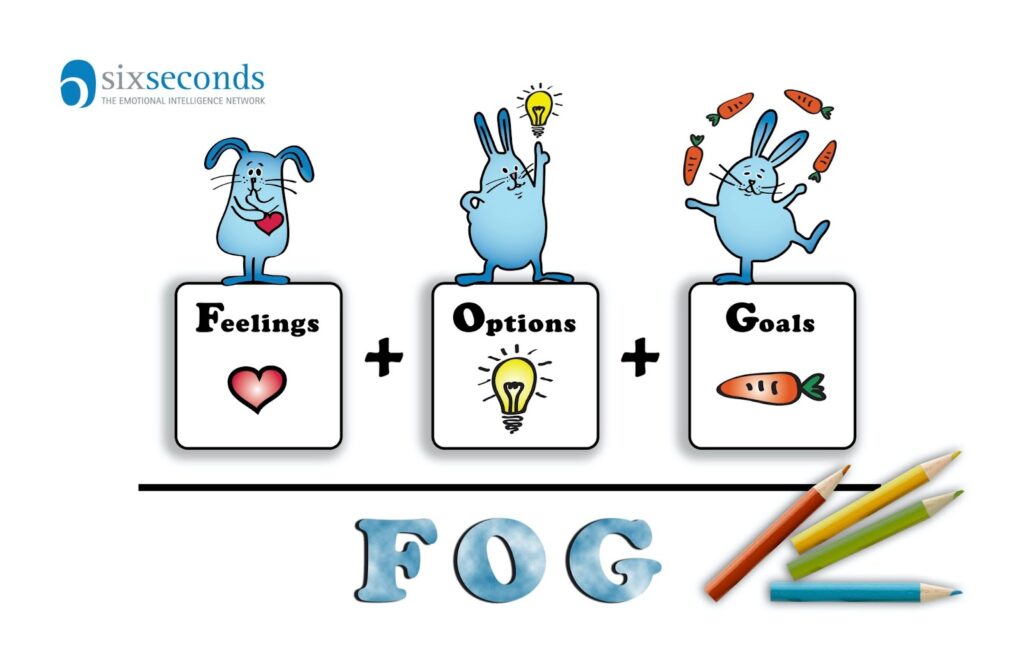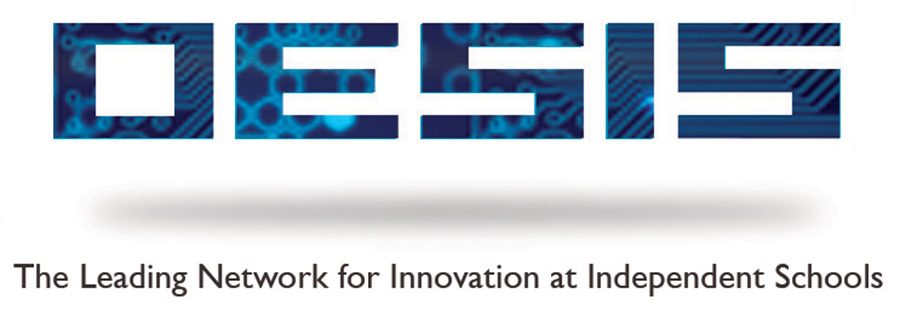
~20 minutes
Try ONE of these strategies.
We all have emotional intelligence — the challenge is using it! In the midst of hurt and frustration, it seems so much easier to just stomp our feet… or hurt someone back… or run away… What action will actually solve the problem?
To answer, all we need is a little emotional intelligence. It’s actually an incredibly simple idea: If we get thinking and feeling working together, we make better choices. Help students make an emotionally intelligent choice for themselves with this activity.

FOG:
- F: Feelings. What’s going on inside?
- O: Options. How could I respond?
- G: Goals. Why might I move forward?
The same steps apply when solving a problem between people…
FOG for social problem solving or conflict resolution:
- F: Feelings. What does each person feel? What is each person doing?
- O: Options. How could we respond to each other? What choices can we make?
- G: Goals. Why might we move forward? What’s our real goal?

2. Triptych of Thoughts, Feelings and Actions or The Iceberg
Our feelings are often elusive and mysterious. Look at this iceberg. Only 15% of the iceberg is above the water and can be readily seen. The rest of the iceberg (the other 85%) is below the water and cannot be seen. Remember a huge ship like the Titantic was sunk because of an iceberg.
Our emotions are a lot like this iceberg, many of them are unseen and mysterious to us. We need tools to “discover” our emotions and make them known to us. Today we are going to use the tools of creating images to help us discover our emotions around some events. We need tools to “discover” our emotions and make them known to us. Today we are going to use the tools of creating images to help us discover our emotions around some events.
Mindfulness is a practice embraced by a growing number of social-emotional learning scholars and practitioners. Mindfulness is not only a practice for students, it’s equally important for educators. Go to this link to find some mindful activities and practices for yourself and to use in the classroom.
4. Grow Calm — Mini POP UP Kit
Anxiety is a message that tells us to pay attention… ‘Be ready for what’s coming next’. It’s a helpful message, but sometimes people have too much of that message. They are trying to ‘stay ready’ all the time, and that results in anxiety. Unfortunately, anxiety in children is on the rise, but fortunately, there are techniques to help.
We hope this Mini POP-UP Kit gives you and the little ones in your life some tools for actively increasing calm and lowering anxiety in your life.

